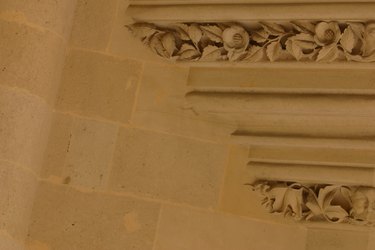Things You'll Need
Poplar
Gouge
Chisel
Carving knife
Utility blade
Pencil
Sandpaper

Poplar is a versatile and inexpensive wood for carvers, strong enough to hold elaborate detail and yet soft enough to stand out among available options of hardwood. Yellow poplar is most commonly used for carving and, though available through home improvement retail outlets, is sold at its highest grade in lumber yards. Popular among native tribes along the East Coast, poplar woodwork continues a long tradition that you too can participate in with the proper tools and regular practice.
Step 1
Prepare an outline or preliminary sketch of the woodwork. For sculptural work, preparatory sketches are a tried and true way of preparing for the delicate work of carving. For simpler designs, the outline of the image can be directly drawn on the poplar. The level of detail depends on your familiarity with wood carving; more experienced carvers may be able to intensely visualize their intended result.
Video of the Day
Step 2
Use a chisel to define the basic shape of the sculpture, emphasizing delicate work as a general habit. Poplar, despite being considered among the hardwoods, is actually comparable with most softwoods, and should not pose any increased difficulty for even the beginning wood cutter. If working with a more two-dimensional pattern or image, begin instead by etching its outline to a depth of about 3/16th of an inch using a small carving knife or a utility blade.
Step 3
Switch to detail-oriented carving tools to begin the fine work of the sculpture. Gouges will help create curves and rounded crevices if your sculpture has a more rotund quality. Switch to V-tools for angular sections, rectangular shapes and defining lines that may pattern your work. Finally, a carving knife will allow for versatile fine carving that will heavily rely on your delicacy and skill.
Step 4
Use a vacuum or brush to periodically clear off debris, working in phases to gradually define your sculpture.
Step 5
Finalize your sculpture by combining hand sanding with low-speed electrical sanding. Poplar wood does not stain evenly and will require essentially a staining of a pre-applied varnish to change its color. A better option is to let it naturally oxidize over time to a rich brown hue.
Video of the Day